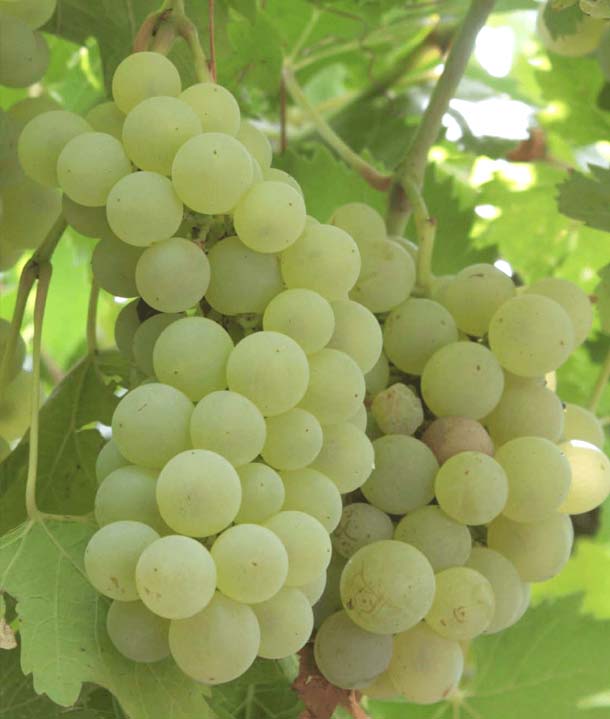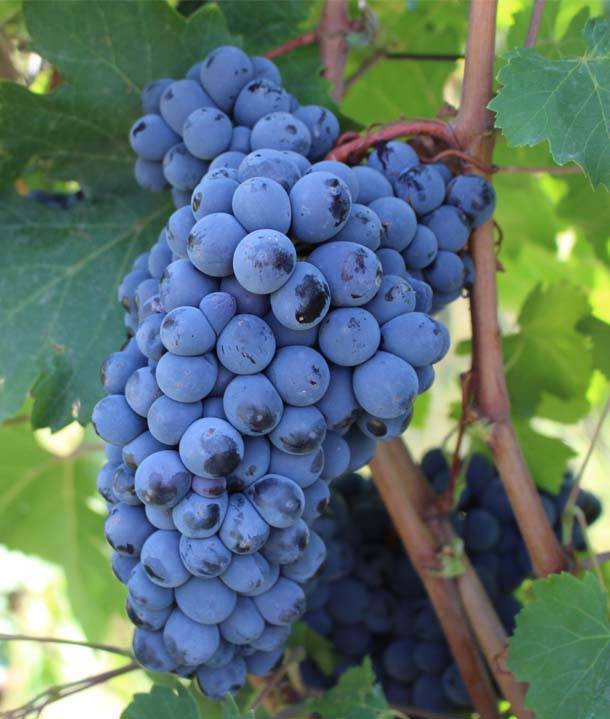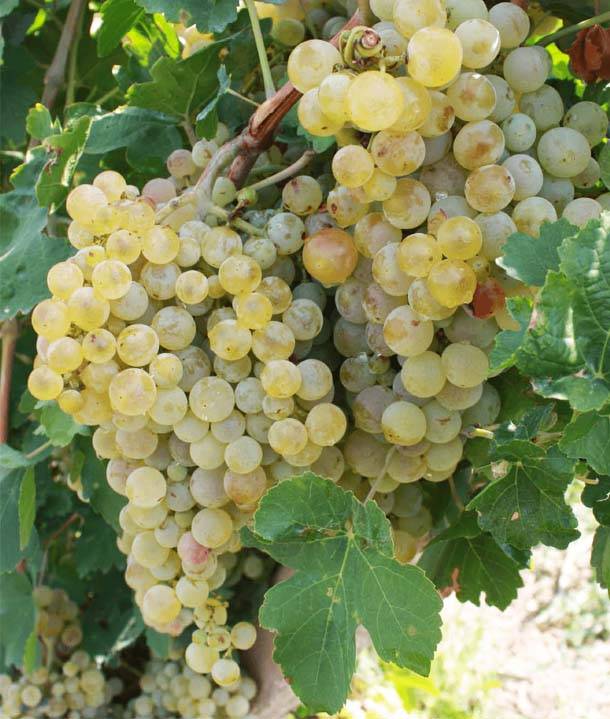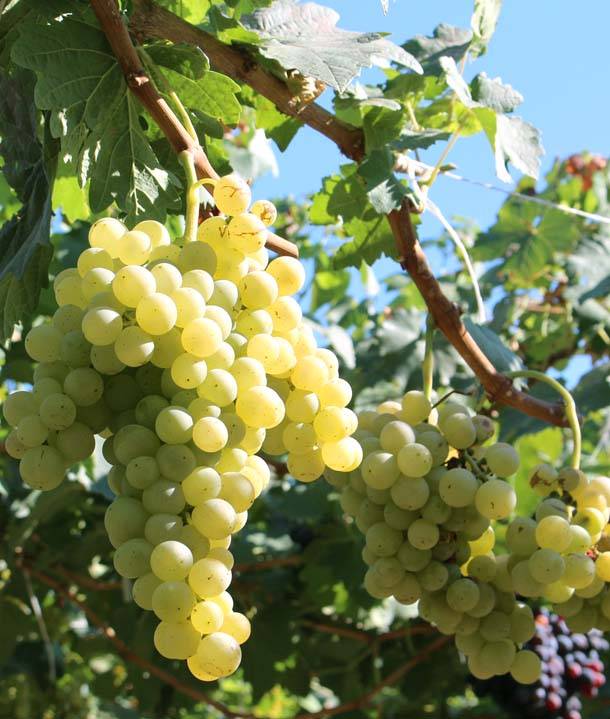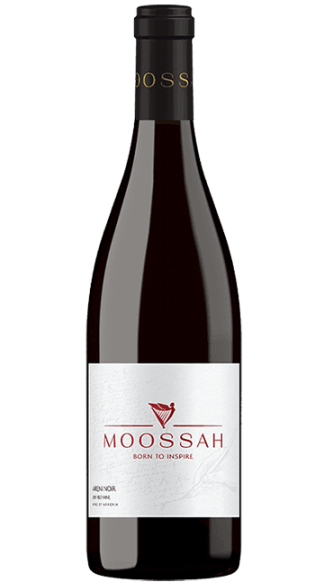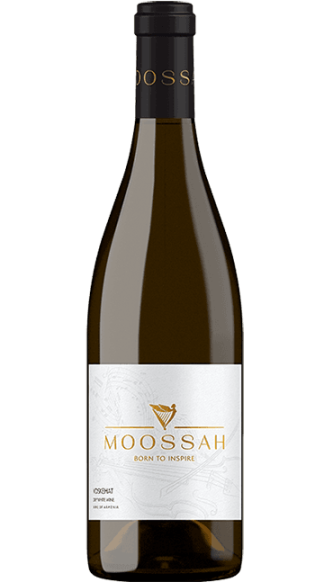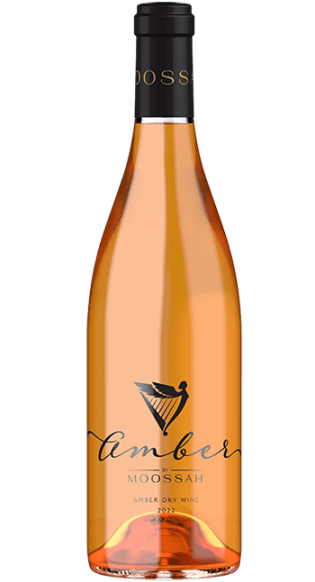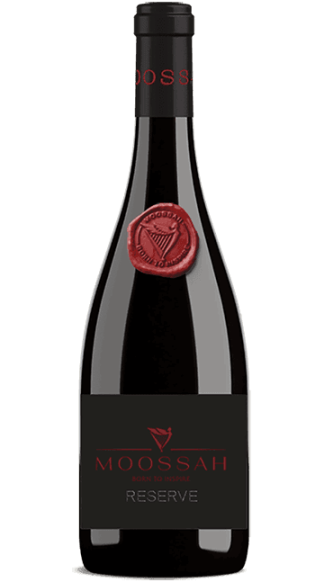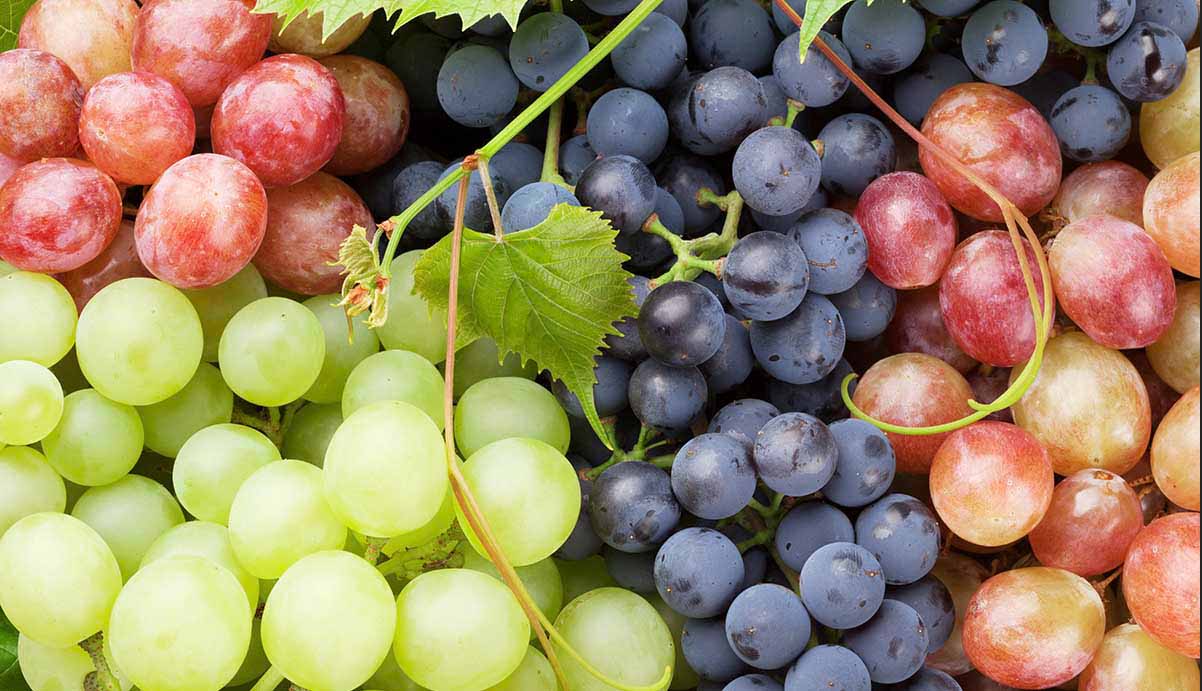
Winemaking in Armenia – Regions
Among the many interesting facts about winemaking in Armenia is the number of indigenous grape varieties that grow here.
According to the Vine & Wine Foundation of Armenia, there are more than 400 different grape varieties in the country, about half as many as Italy, which is geographically ten times larger than Armenia.
This is a testament to the country’s unique terroir and the diversity of its landscape. Of course, not all of these grapes are used for winemaking in Armenia. Out of the 400+ varieties, only around 50 are used in the production of wine.
The infographics presents the 7 wine regions of Armenia and Artsakh, with respective grape varieties that are typical for the specific area.
One of the most interesting things about Armenian wines is the way they reflect the country’s long and complex history. Armenia has been invaded and ruled by various empires over the centuries, including the Persians, Romans, Byzantines, and Ottomans. Each of these empires has left its mark on the country’s culture and traditions, including its winemaking practices.
For example, during the Soviet era, the Armenian wine industry was nationalized and turned into a state-run enterprise. This led to a focus on quantity over quality, and many of the traditional winemaking techniques were lost.
However, since the fall of the Soviet Union, there has been a renewed interest in Armenian wines, and a growing number of winemakers are rediscovering and reviving the traditional winemaking techniques that have been passed down from generation to generation.
In this article discover the diverse and flavorful world of Armenian wines with our comprehensive guide. Learn about the different grape varieties used in winemaking, from the rich and full-bodied Areni Noir to the aromatic and crisp Kangun. Explore the unique characteristics of each type of wine, from elegant and complex reds to refreshing and zesty whites, and find the perfect pairing for your favorite dishes. Whether you’re a wine connoisseur or simply looking to broaden your palate, our guide to Armenian wines has everything you need to know to savor every sip.
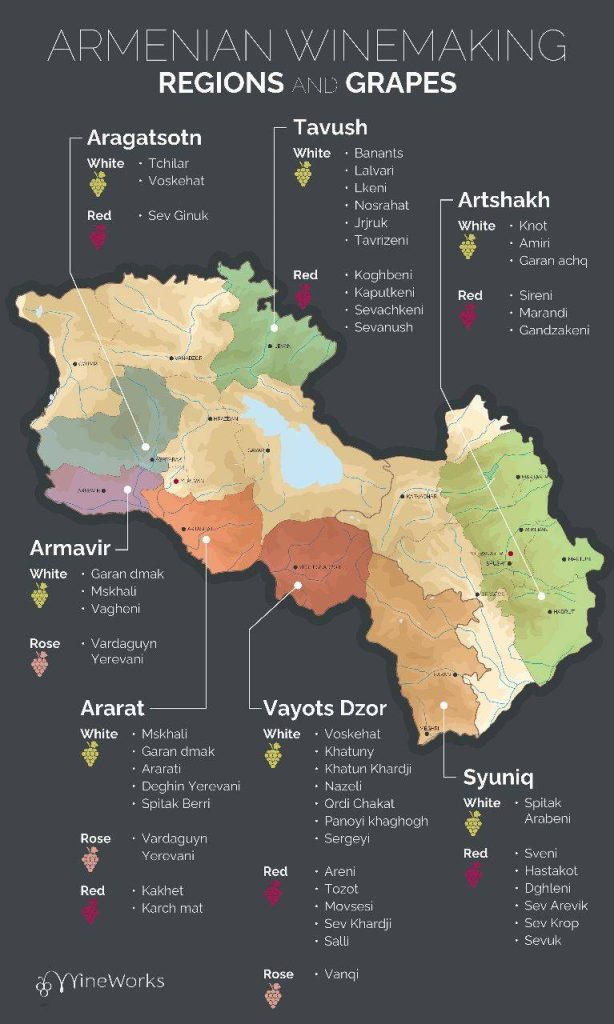
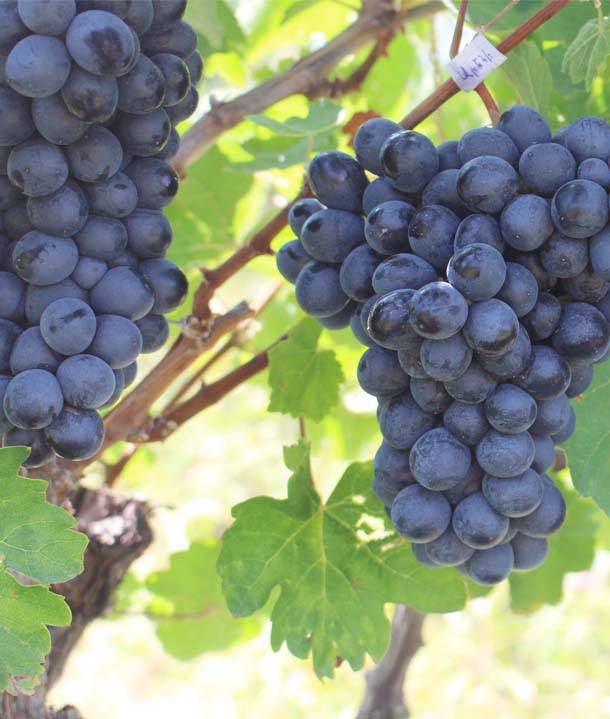
Areni Noir or Areni
Areni is sometimes referred to as Areni Noir and is considered the flagship grape variety of Armenia.
It is a bit of a chameleon and produces a wine that has the taste and aroma of Merlot and Pinot Noir blended together.
There is no limit to Areni’s ability to lilt and seduce, or shout and command. It combines grit and velvet, zest and sweetness, versatility and confidence, with a foot in both worlds.
Wine Style
Areni wines are known for their vibrant color, pronounced acidity, and freshness, even when they are young.
In the aroma, one can detect subtle hints of cherry, blackcurrant, and black pepper. When aged in Armenian oak, Areni wines become more refined and smooth, with additional flavors of blackberry, plum, black olive, and pomegranate.
These wines offer a distinctive expression of the Vayots Dzor region’s terroir.
Food Pairing
Areni Noir is a great complement to dishes featuring veal and lamb, roasted poultry, meaty casseroles with gravy, hard cheeses, and grilled mushrooms from the forest.
For a truly wonderful experience, try pairing Areni wines with traditional Armenian barbecue and enjoy the national songs that often accompany such feasts.
Voskehat
Voskehat, an indigenous Armenian grape variety, is highly regarded as “the queen” of Armenian grapes and has been cultivated for over 3.5 thousand years.
The grape’s vines can survive for more than 150 years and still produce fruit.
Its name translates to “golden berry,” and it is a late-ripening grape commonly grown in regions such as Vayots Dzor and Aragatsotn, but also found in mixed or varietal vineyards throughout the country.
The grape itself is identifiable by its yellow-white or amber hue, sometimes with small brown spots.
These characteristics are well-documented through archaeological discoveries, such as the analysis of fossilized Voskehat seeds found during excavations of Teishebaini.
Wine Style
Voskehat, with its distinctive qualities from the golden berries, inspires skilled and imaginative viticulturists and winemakers to create stunning works of art.
These wines showcase a straw color with hints of gold, sometimes with a faint greenish hue.
Depending on the production method, Voskehat can result in wines that are notably tangy and refreshing.
The prominent aromas of fresh white fruits, subtle hints of citrus like lime zest, freshly mown grass, and delicate scents of alpine wildflowers provide an endless source of excitement.
The finish is marked by a pleasing acidity and a hint of beeswax flavor.
Food pairing
Voskehat wines pair well with a variety of dishes, including sweet shellfish, chicken, turkey, pork, veal, risotto, pasta, and creamy or buttery sauces.
The wine’s flavor profile also complements dishes that feature tangy ingredients such as tomatoes and vinegar. Additionally, Voskehat is an attractive and suitable aperitif, enjoyable on its own throughout the year.
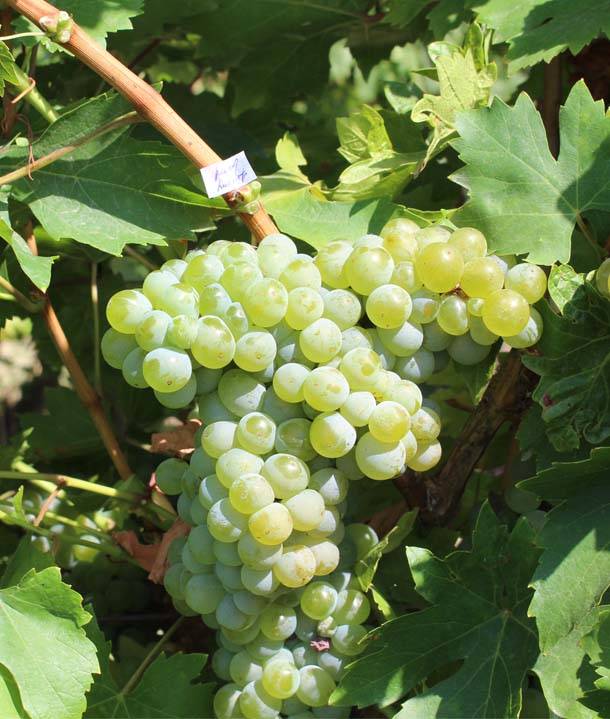
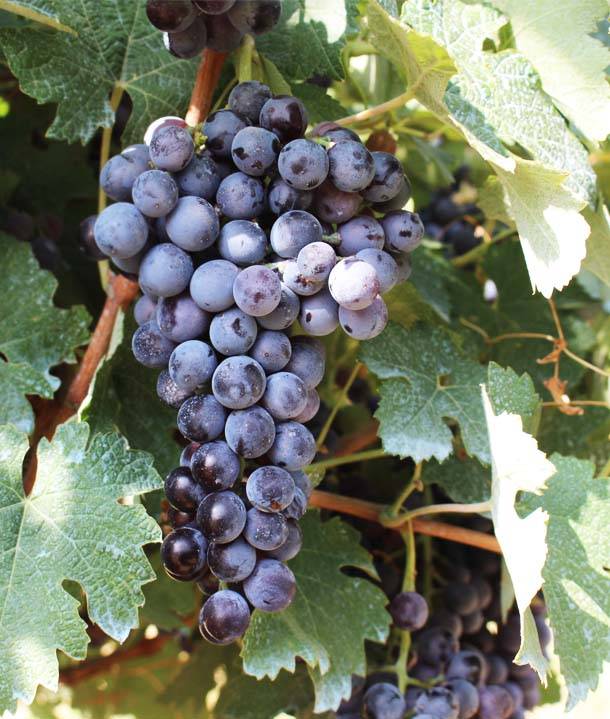
Kakhet
Kakhet, which means “hung grape,” has its origins in Urmia, an ancient Armenian land where grapes were traditionally hung from nets to dry during the winter. This late-ripening variety is now widely cultivated in the Ararat region and is used to produce both single-varietal wines and blends with other red grape varieties such as Sev Areni and Haghtanak.
Wine Style
The Kakhet grape, grown in Armenia’s unique and historically rich terroir, can be crafted into wines of varying styles. Its light aromas of blackberry, blackcurrant, fig, and plum are complemented by notes of black pepper, spices, and smoke.
Food Pairing
Despite its delicate features, Kakhet has expressive flavors that pair well with savory dishes such as pork, veal, lamb, or venison with mushroom sauce and herbs. With a balanced tannin structure, Kakhet’s rich flavor and soft texture make it a versatile complement to many different dishes.
Kangun
Kangun is a white grape variety that is indigenous to Armenia. This grape is grown mainly in the Armavir region of Armenia, where the climate and soil are suitable for its cultivation.
Kangun is known for producing crisp and refreshing white wines with delicate aromas of white flowers and citrus, and a subtle minerality on the palate. It is also sometimes used in blends with other local grape varieties, such as Voskehat and Rkatsiteli, to produce more complex and layered wines.
Kangun is an important part of winemaking in Armenia heritage and is gaining popularity both domestically and internationally.
Wine Style
Kangun wines have a vibrant and lively character, with a pale straw color and a bouquet that features notes of white fruits, wildflowers, honey, and quince. The wine’s freshness and aromatic complexity are evident on the palate, with flavors of creamy and fruity pastries.
Food Pairing
Kangun wines are an excellent complement to fresh seafood salads, poultry dishes with light sauces, fruit pies, and exotic fruit sorbets. They pair particularly well with sauces that have a citrus or garlic base. Crunchy summer salads and stuffed bell peppers are also great dishes to pair with Kangun, as the flavors of the wine and the dish complement each other.
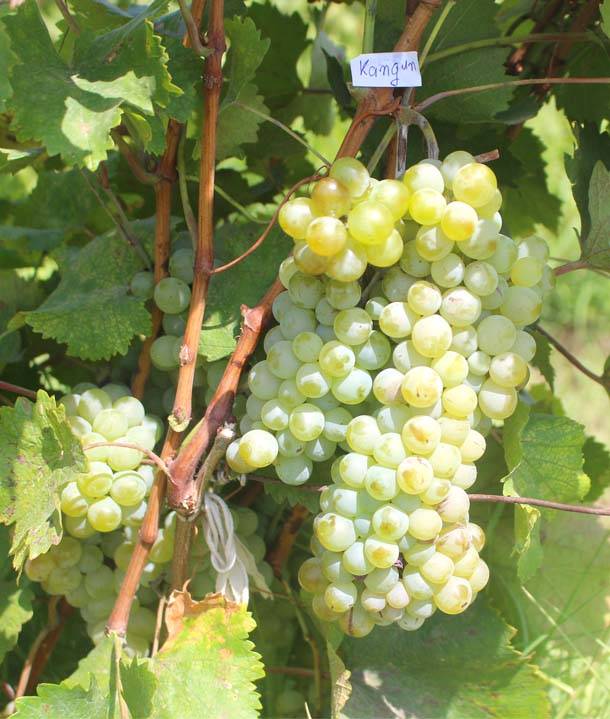
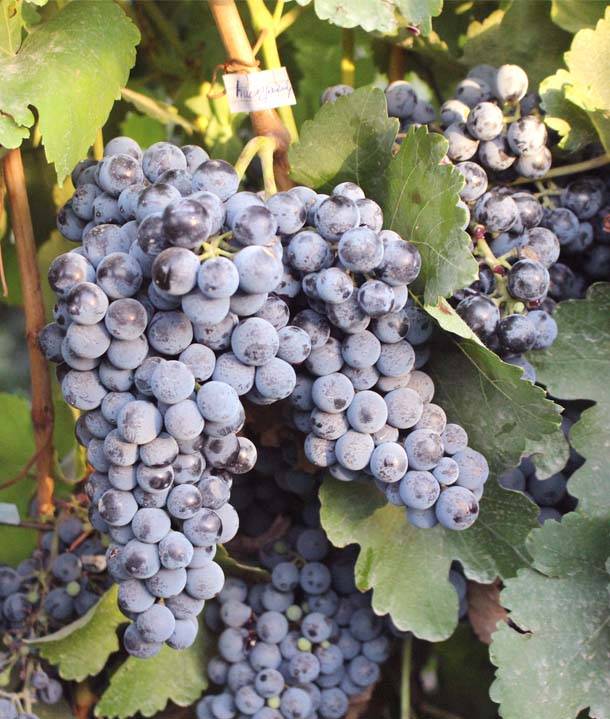
Haghtanak
Haghtanak is a local Armenian grape variety that matures late and its name means “victory” in the Armenian language. Due to its deep red juice and pulp, it is commonly used in blends (often with Kakhet), but can also be used to produce high-quality single varietal wines that can age well. Haghtanak is mainly grown in the Ararat plateau.
Wine Style
Winemakers can create rich and complex wines from Haghtanak that reflect the joy of triumph and can be considered a victory in their own right. These wines have a rich tannin structure and exhibit a subtle purple color, along with fruity aromas of blackberry, blackcurrant, plum, cherry, as well as notes of vanilla and cloves. Occasionally, hints of pepper, coffee, and chocolate may also be present in the wine’s bouquet.
Food Pairing
Haghtanak wines pair well with gentle veal dishes, salads dressed with balsamic vinaigrette, creamy blue cheese, and flavorful tahini.
Khatoun Kharji
Khatoun Kharji is a rare indigenous grape variety found mainly in the Vayotz Dzor region, and its berries range in color from yellow-green to suntanned yellow. Translated from Armenian it means Madam Khadji.
Wine Style
Wines made from Khatoun Kharji are of noble quality and have a unique varietal bouquet and flavor that provide intense pleasure.
Food Pairing
These vibrant wines are dominated by alpine flowers, citrus, and delicate pineapple, making them an excellent match for cool summer nights in the beautiful and awe-inspiring Armenian highlands.
Khatoun Kharji wines are especially enjoyable when paired with salads, light seafood, or chicken dishes that have spicy flavors, allowing for an extended period of remarkable pleasure.
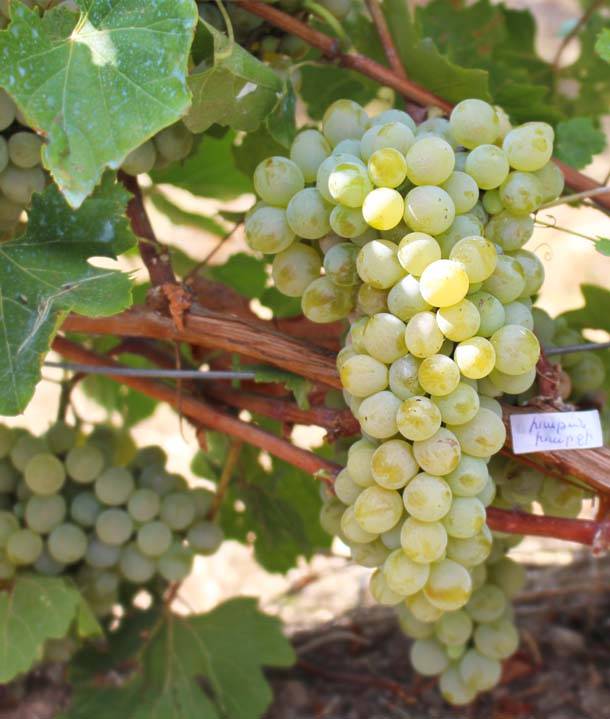
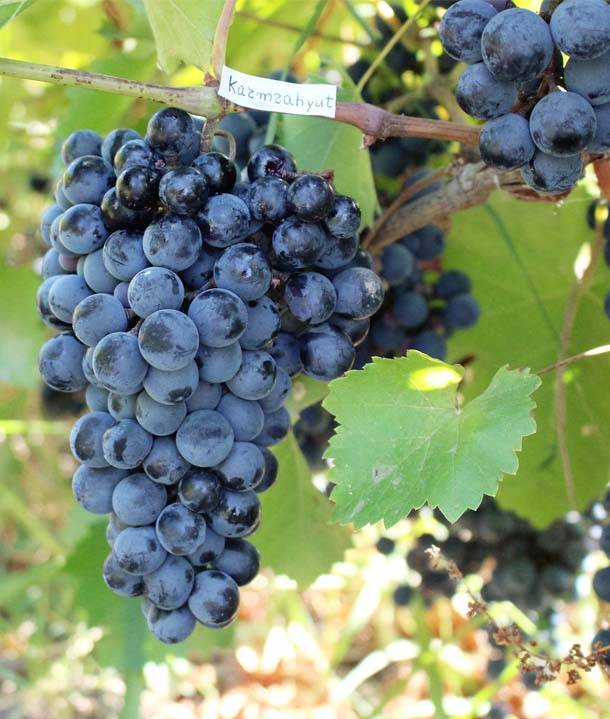
Karmrahyut
Karmir-hyut” translates to red juice and is a deep red color. This type of juice is primarily found in the Tavush region.
Wine Style
Karmrahyut has potential for producing varietal wine due to its rich color, and is often blended with other red varieties, such as Areni and Kakhet, to enhance the overall structure. It has aromas of cranberries, litchi, cherries, plums, blackcurrant, and rose petals, and when aged in Armenian oak barrels, it develops notes of white pepper, cloves, vanilla, and cinnamon.
Food Pairing
Karmrahyut pairs well with aged cheese and spicy meat stews, and goes particularly well with barbecued meats, beef in full-flavored sauce, and tomato-based dishes like pizza or Bolognese.
